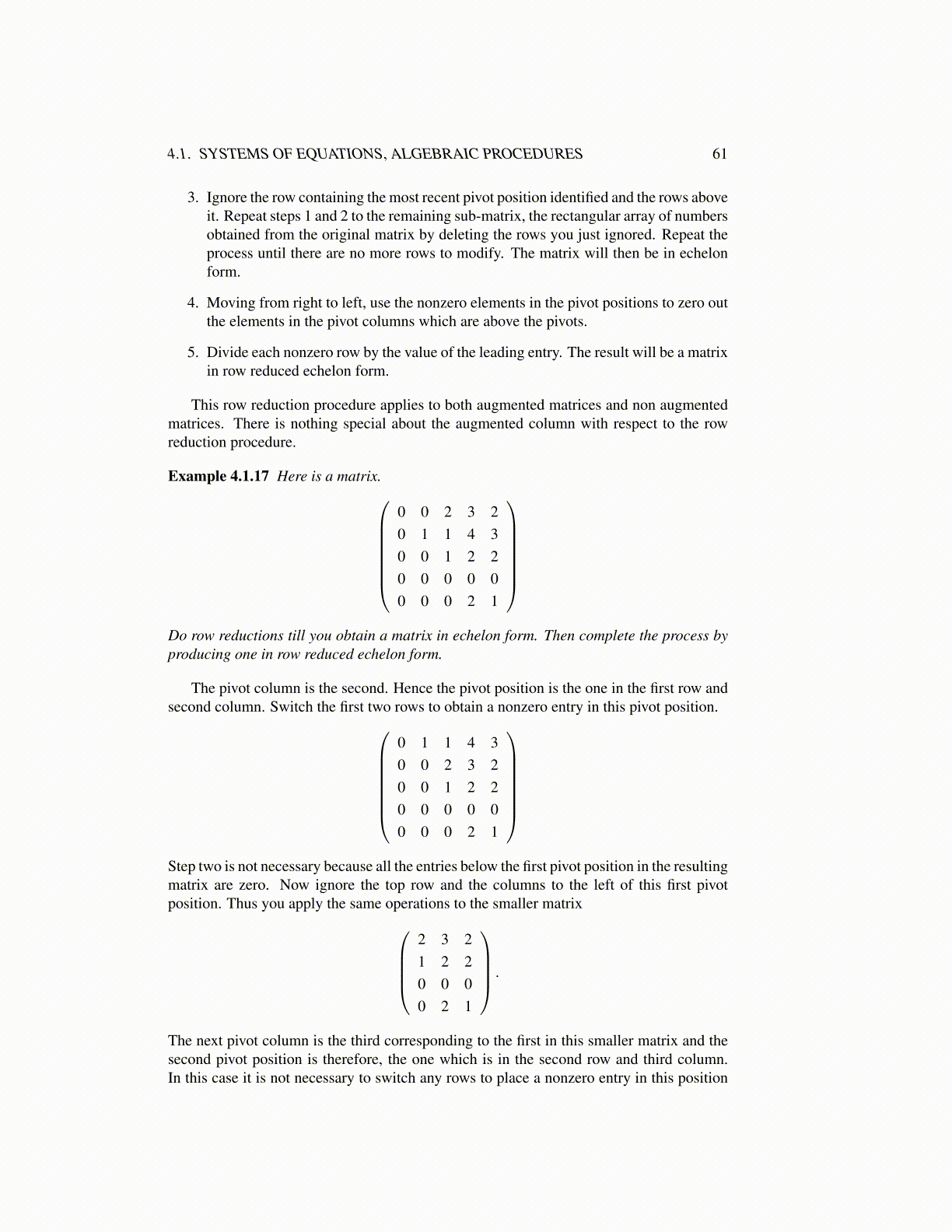
4.1. SYSTEMS OF EQUATIONS, ALGEBRAIC PROCEDURES 61
3. Ignore the row containing the most recent pivot position identified and the rows aboveit. Repeat steps 1 and 2 to the remaining sub-matrix, the rectangular array of numbersobtained from the original matrix by deleting the rows you just ignored. Repeat theprocess until there are no more rows to modify. The matrix will then be in echelonform.
4. Moving from right to left, use the nonzero elements in the pivot positions to zero outthe elements in the pivot columns which are above the pivots.
5. Divide each nonzero row by the value of the leading entry. The result will be a matrixin row reduced echelon form.
This row reduction procedure applies to both augmented matrices and non augmentedmatrices. There is nothing special about the augmented column with respect to the rowreduction procedure.
Example 4.1.17 Here is a matrix.0 0 2 3 20 1 1 4 30 0 1 2 20 0 0 0 00 0 0 2 1
Do row reductions till you obtain a matrix in echelon form. Then complete the process byproducing one in row reduced echelon form.
The pivot column is the second. Hence the pivot position is the one in the first row andsecond column. Switch the first two rows to obtain a nonzero entry in this pivot position.
0 1 1 4 30 0 2 3 20 0 1 2 20 0 0 0 00 0 0 2 1
Step two is not necessary because all the entries below the first pivot position in the resultingmatrix are zero. Now ignore the top row and the columns to the left of this first pivotposition. Thus you apply the same operations to the smaller matrix
2 3 21 2 20 0 00 2 1
.
The next pivot column is the third corresponding to the first in this smaller matrix and thesecond pivot position is therefore, the one which is in the second row and third column.In this case it is not necessary to switch any rows to place a nonzero entry in this position